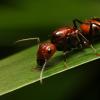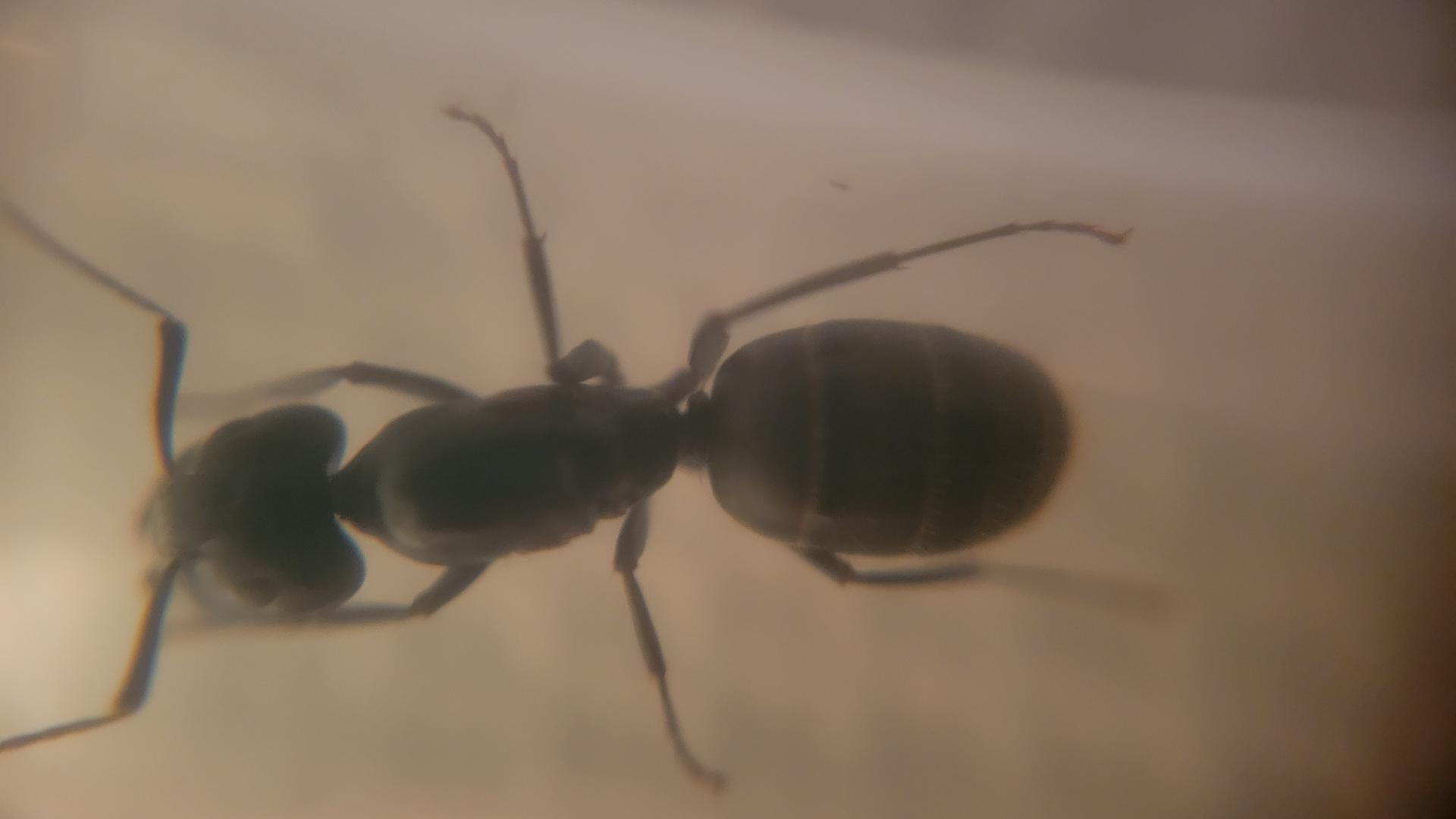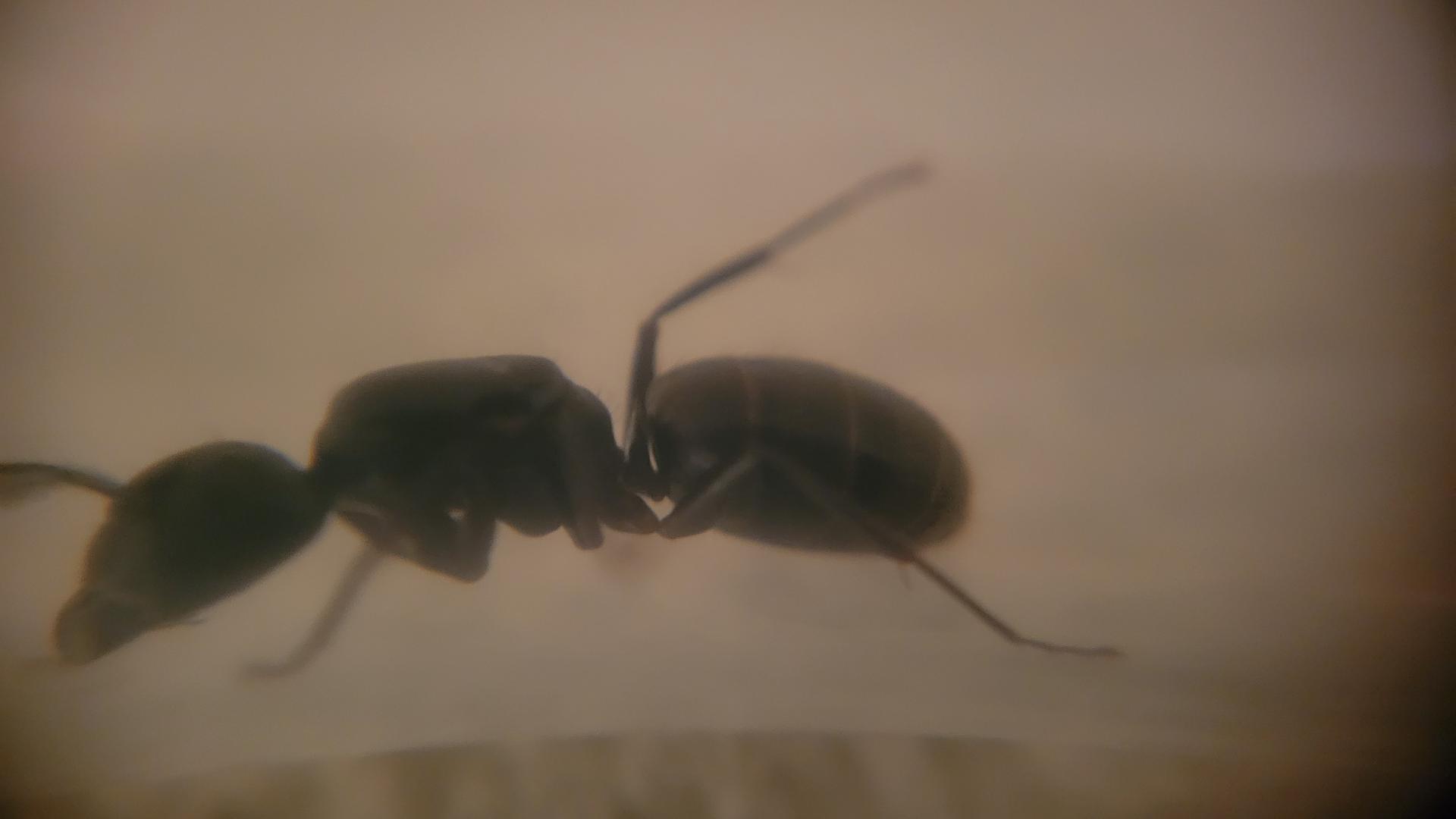This queen's so big I was sure she was a Camponotus, but her gaster was not the usual shape, and now I've seen her up close she seems like a formica? And I assume parasitic given that chonker of a head. But she's so BIG. Do they really get this big?
Captured: NY Hudson valley, forested area
Length: 21mm




















